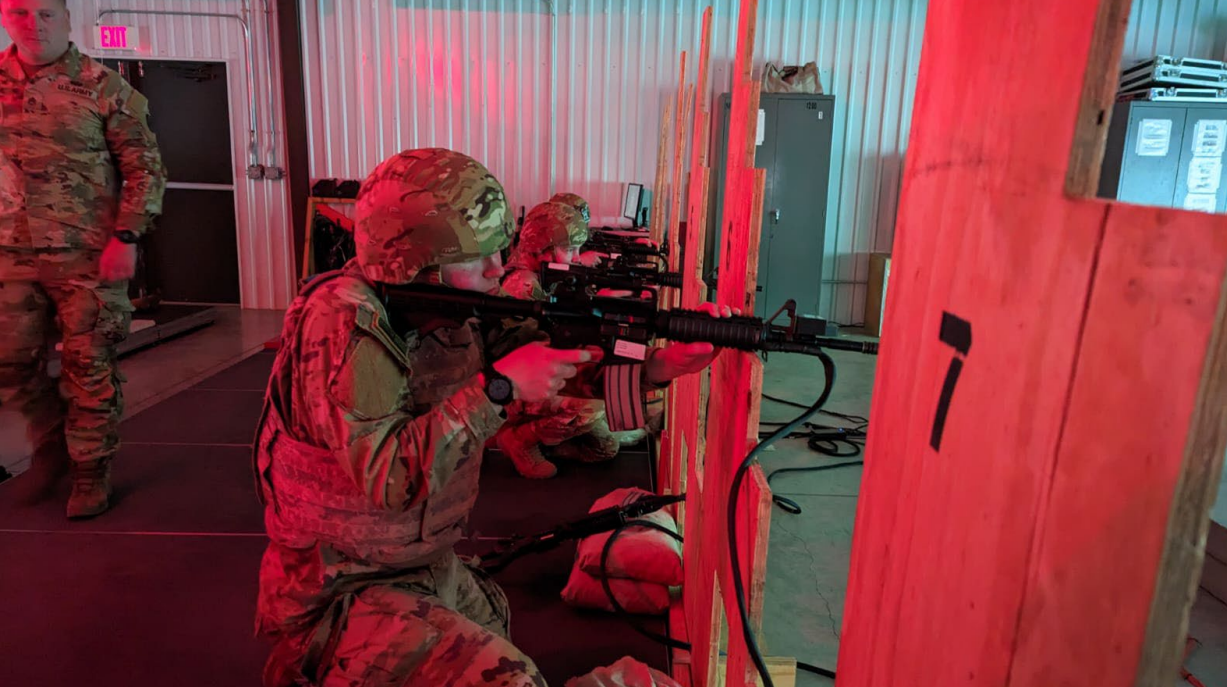13F Fire Support Specialist
Bravo Battery, 1st Battalion 78th Field Artillery
13F Class 14-23
Class 14-23 begin learning the fundamentals of Land Navigation. Land Navigation instills the groundwork of the 13F MOS by allowing the Soldiers the necessary skills of how to read and utilize a military map. Later in the course students will track not only their location, but determine enemy target locations based off of what they see.
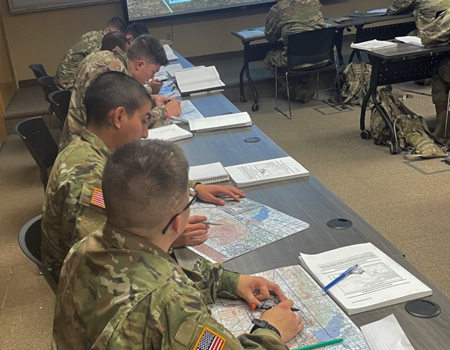
Class 14-23 is introduced to map overlays and how to effectively place icons and diagrams on a military map. The students are also learning the various type of adversary vehicles they may engage within their time in the Army as a 13F. It is key for them our Soldiers to be able to identify friendly versus enemy equipment in order to rapidly engage targets.
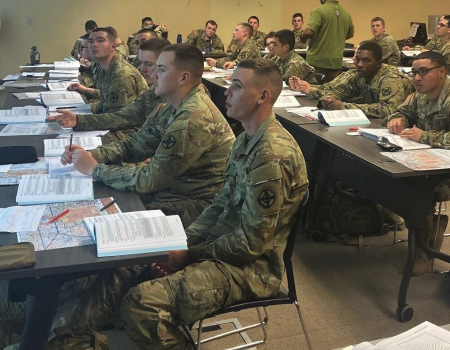
Class 14-23 conducts a graded Call for Fire using their skills learned throughout the week. This simulator allows for trainees to call for missions against a variety of targets without being in the elements and using live rounds. It is the perfect way through numerous repetitions to hone their skills before going to the hill to live fire.
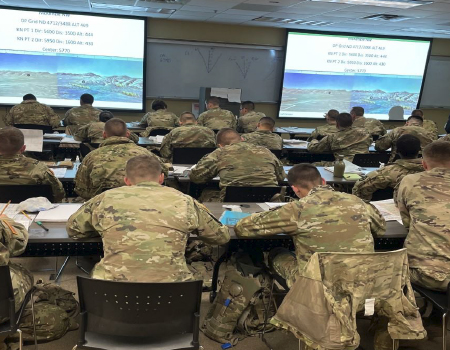
Class 13/14-23 conducting simulated Calls for Fire in a simulator using their initial introduction into the Polar Call for Fire method. The polar method involves students identifying a target and engaging it based on a distance and direction from their known location. While the fastest method, it requires them to have a skill at estimating distances and associating what they see around them.
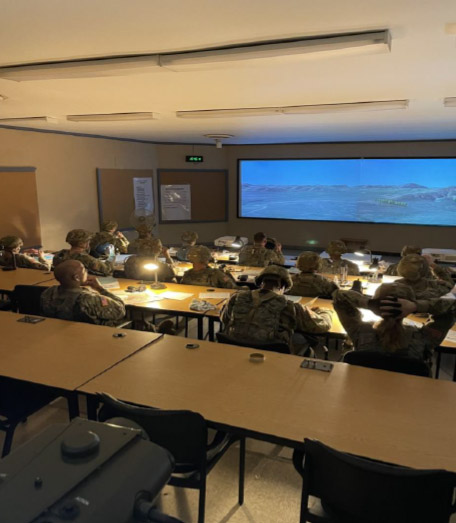
Class 13/14-23 conducts simulated Calls for Fire using the final skills of Polar and begin their introduction into the Grid method of Call for Fire. The grid method requires Soldiers to be able to identify an 8-digit grid on a military map based on what they are observing in the simulator. Using the land navigation tools they learned previously, they then use that location to call for fire on an enemy target.
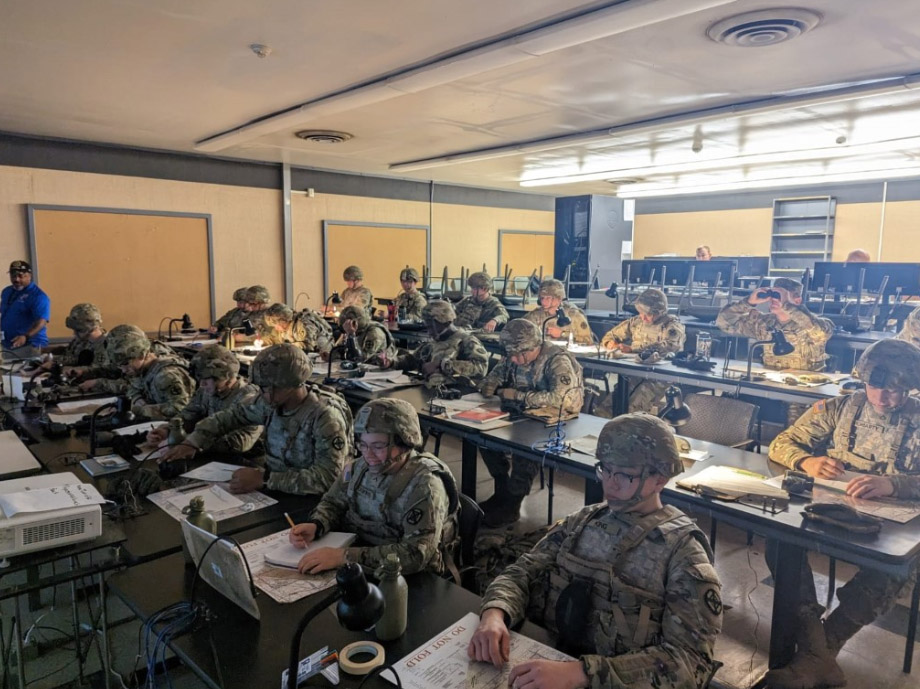
Class 13/14-23 conducts simulated Calls for Fire in a simulator using their initial introduction into the Polar Call for Fire method. The polar call for fire involves identifying a target and estimating a distance and direction to it from their location. Then sending that data to a fire direction center to have guns engage it.
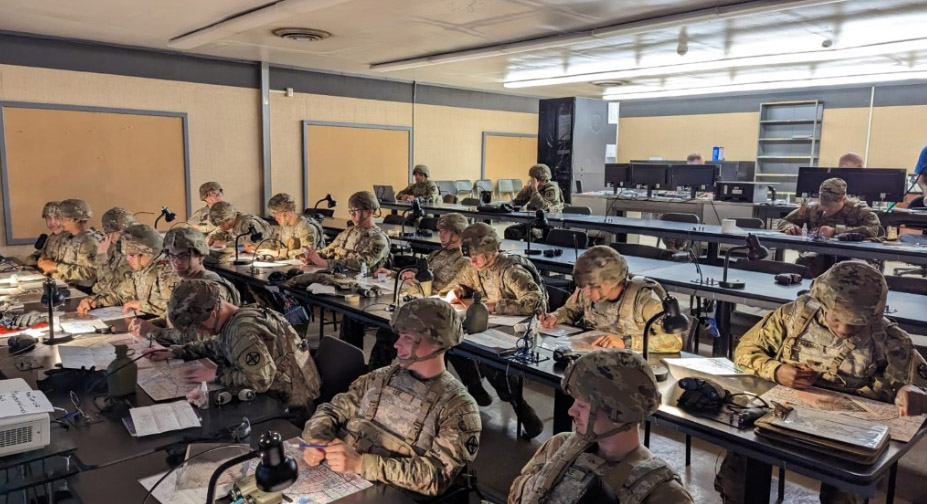
Class 13/14-23 conducting simulated Calls for Fire by using the Shift from Known Point method of Call for Fire. Shift from known point means the students have a known location and must judge a distance and direction from that to an identified target nearby. It is a speedy way to call for fire in a place where they will remain for a longer period of time.
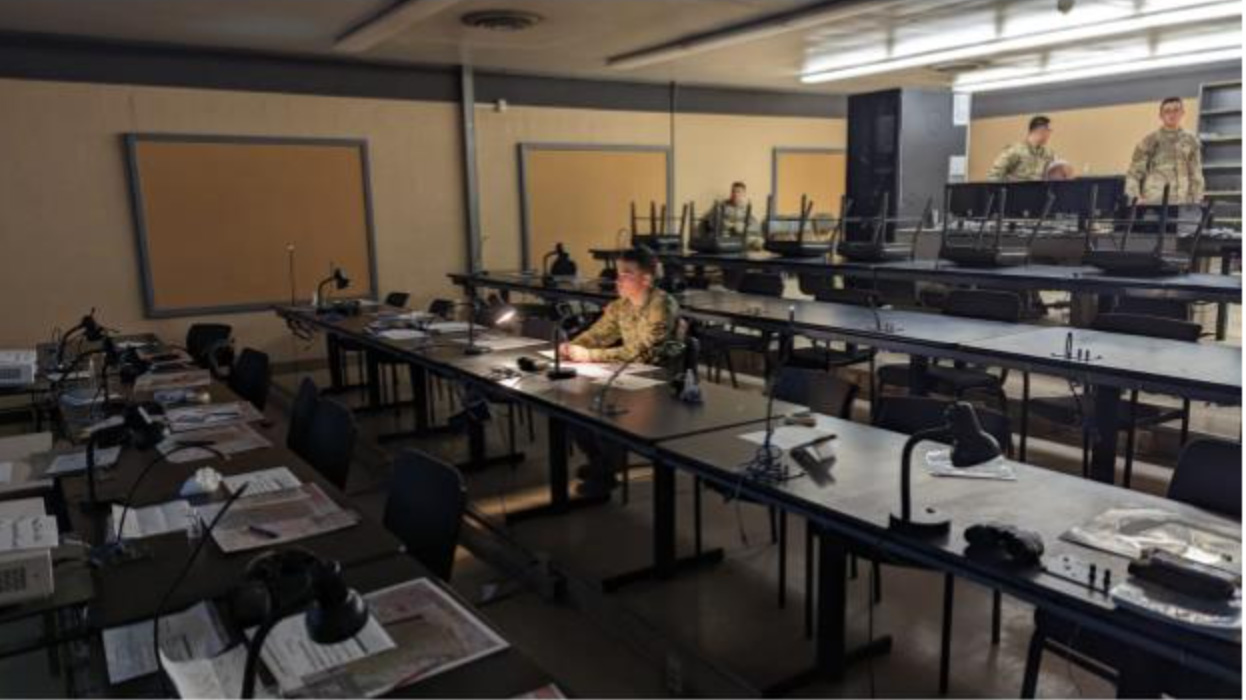
13F Class 13/14-23 conducts the High Physical Demands Test consisting of a 12-mile foot march carrying 40+ lbs. in four hours, drag a 270 lbs. casualty while wearing full battle rattle, and simulate changing/installing a 25mm barrel weighing approximately 105 lbs.
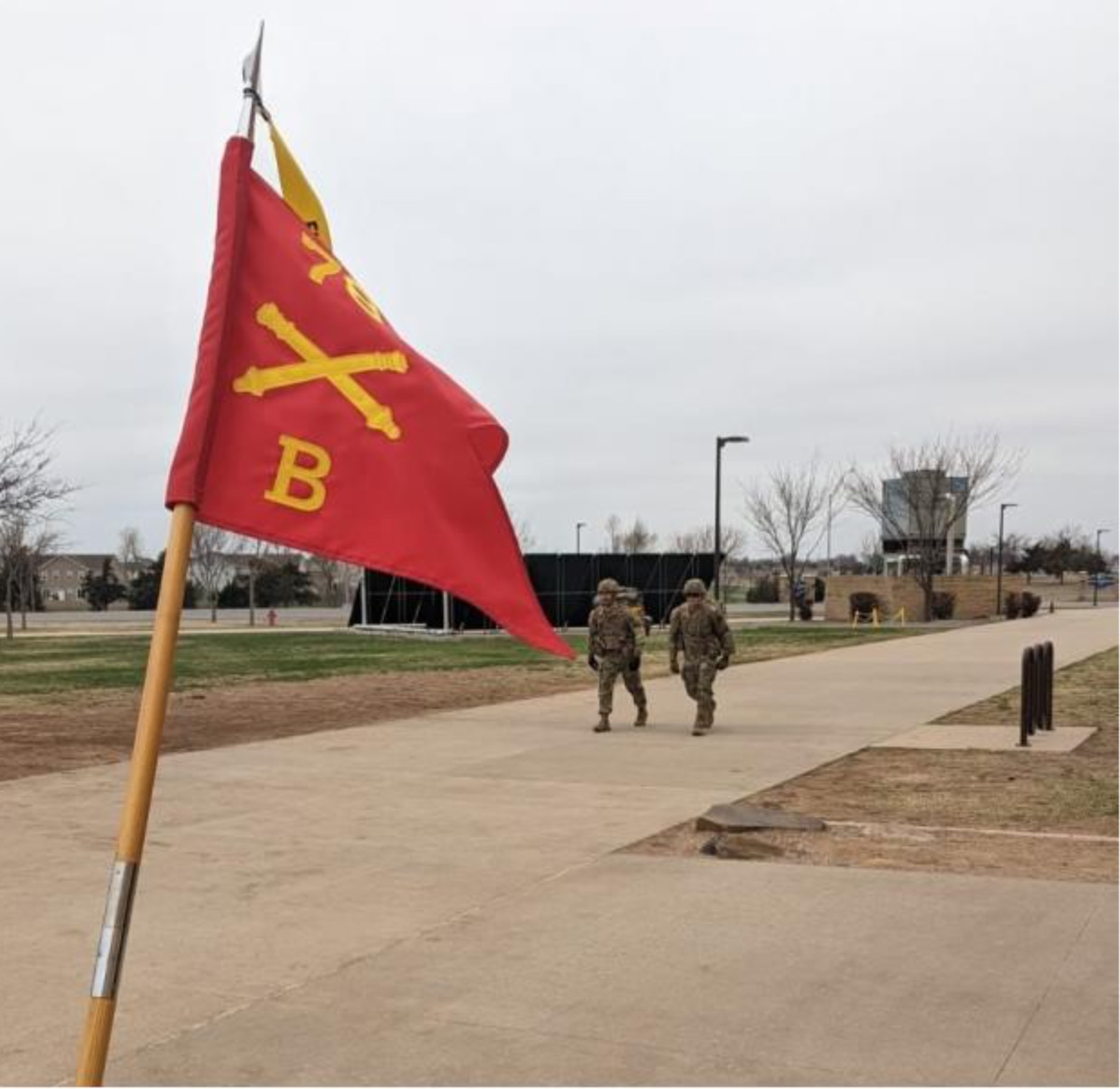
Class 13/14-23 starts their Culminating Training Event (CTE) at the Engagement Skills
Trainer (EST). The trainees were able to zero and qualify in the simulator. After firing,
the students will conduct a foot march up to their training area where they will stay for
the remainder of their CTE
